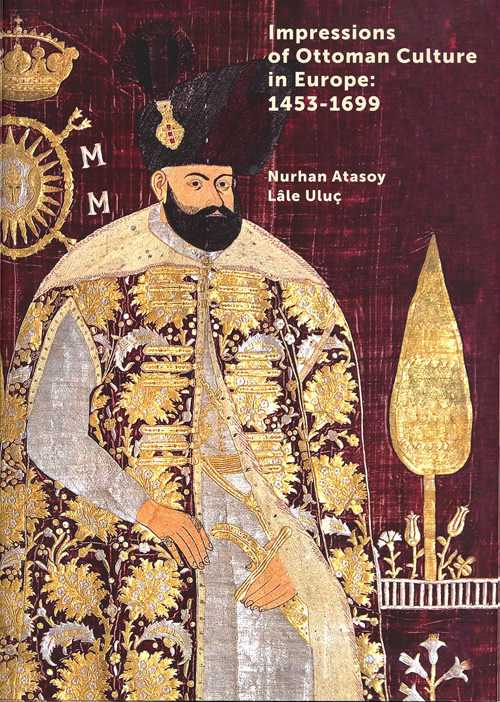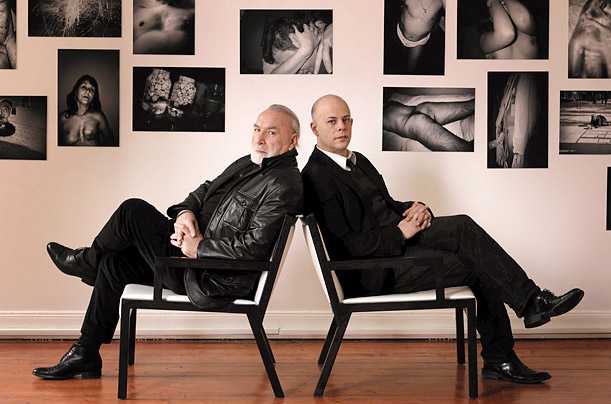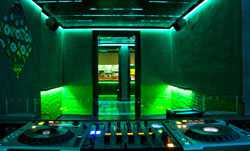Kerimcan Guleryuz, founder of two of Istanbul’s hottest galleries, remembers the first time he heard about The Mihrab. It was back in the 1980s, when his father Mehmet, one of Turkey’s best-known living artists, made a pilgrimage to the home of an elderly Ottoman princess to see it. She made him wait for hours, drinking glass after glass of tea in her dusty old villa on the Bosporus. At last she said, with some reluctance, “I suppose you’ve come to see the painting.” The dowager then tottered over to a corner and pulled back a thick black velvet curtain, and there it was: the most famous picture in the history of modern Turkish art.
The Mihrab, painted in 1901 by artist and Ottoman archaeologist Osman Hamdi, is shockingly modern even now. In it a beautiful young woman in European dress, exhibiting the first stages of pregnancy, has turned her back against the traditional prayer alcove known as a mihrab. Her shapely bottom is perched on the stand where the Koran is supposed to be; sacred-looking texts are scattered beneath her feet. “It’s woman as creator, woman as God,” says Guleryuz, 41, rolling yet another handmade cigarette as we sit in the Empire Project, one of his galleries. The Mihrab was and is audacious not just because of its feminist connotations but because it touches so many hot buttons of Turkish society then and now — religion, sexuality and whether East and West can be reconciled. “It’s all there,” Guleryuz says. “This is where modern Turkish art began.”
Like his predecessors, the wealthy private collector who now owns the painting doesn’t dare show it in public. Fortunately, there’s plenty of other provocative work to see in Turkey these days, and like The Mihrab, much of it speaks to Turkey’s fertile yet somewhat uncomfortable position astride two continents. Gender conflicts, honor killings, an obtuse judicial system, the wealth gap, globalization, tradition vs. modernism — it’s all in the mix at Istanbul’s 200-plus galleries, contemporary-art museums and art festivals that spring up almost weekly.
Now on display at Empire (its name a playful nod to Turkey’s imperial history and new regional leadership ambitions) is a series of explicit, disturbing black-and-white photographs by Halil Koyuturk, 54, a leftist artist who became a political refugee after the country’s 1980 military coup. The images, which explore social problems in Turkey, include shots of drug-racked prostitutes and a naked transsexual disfigured by knife wounds. If pictures like those are tolerated but pictures of westward-leaning Ottomans turning their backs on Islamic orthodoxy are not, that’s a snapshot of just how complicated a secular democracy governed by an Islamic-leaning governing party can be. “The art that’s being created here is going to help the world answer questions about what’s happening in the region and in the Islamic world,” says Guleryuz.
Like Osman Hamdi before them, artists of a new generation are exploring Turkey’s perpetual identity crisis, which plays out on geo-political and individual levels. Consider the work of artists like Taner Ceylan, whose hyperrealist, homoerotic photographs have far exceeded their expected prices at Sotheby’s, or the subtle, witty feminism of a painting like Leyla Gediz’s Birds, in which women in black hijabs and white gloves make playful faces at the viewer with their fingers. “If you are an artist in a country like Turkey, you’ll never be short of material,” says Melih Fereli, head of Arter, a new gallery and exhibition space funded by Turkey’s wealthy Koc industrial family. (The Kocs also poured money into the Metropolitan Museum of Art’s transformed Islamic wing, which reopened to the public in November in New York City.) “There’s a politically energized and radically aesthetic language here,” adds Fereli, who notes that after years of either imitating the West or fetishizing certain local ideas or traditions, Turkish contemporary artists are becoming confident enough to blend the two paradigms into one unique language.
For decades, Turks aspired to become European — an ideal set by the French-speaking, westernizing reformer Kemal Ataturk, who founded modern Turkey in 1923. His legacy has met a challenger in the conservative leader Recep Tayyip Erdogan, the head of the Justice and Development Party (AKP) who became Prime Minister in 2003. Since talks on Turkey’s joining the European Union fell apart in 2006, it has become apparent that Turkey is no longer headed directly toward Western-style liberal democracy. The pious Erdogan, who emerged as the country’s most important leader since Ataturk and the greatest political beneficiary of the Arab Spring, has led some to worry that Turkey will become more conservative, moving away from Europe and closer to the Arab world and Iran.
These tensions have influenced many of the country’s best-known artists, including Kutlug Ataman, whose photographs and video works are collected by New York City’s Museum of Modern Art and who has been short-listed for the Turner Prize. One of his pieces, the four-screen video installation Women Who Wear Wigs, looks at a quartet of women — a devout Muslim university student, a cancer patient, a left-wing fugitive and a Turkish transsexual — who use wigs to express themselves within an authoritarian regime. “In this country, we had first a crude translation of a French-style state, which included nationalism, violence and repression of minorities,” Ataman says. Most of Turkey’s 20th century history was dominated by military-ensured secularism (headscarves for women and fezzes for men were banned in public spaces) and forced Europeanization (many Turks were left functionally illiterate when Ataturk shifted the country from Arabic to Roman script).





